Residential EV Chargers
Commercial EV Chargers
DC Chargers
As an electrician, you’re at the forefront of helping customers embrace the transition to electric vehicles. One of the most common questions you’ll hear is: Which residential EV charger should I install in my home?
With Ocular’s Residential EV Charging range, you can guide your customers to the perfect choice – especially those with solar systems looking to maximise energy efficiency.
1. Understand Your Client’s Power Supply and Demand
A customer’s connection to the grid plays a critical role in determining the best solution for their home and their vehicles demands.
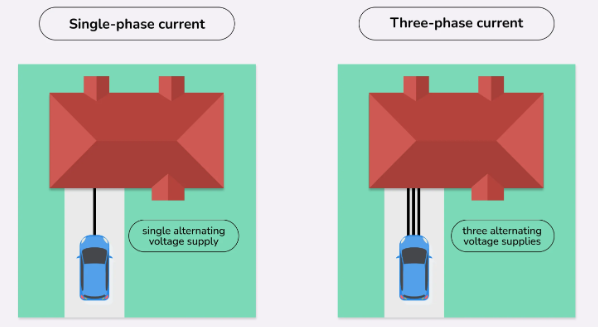
Additionally, consider the household’s overall power demand to ensure the EV charger compliments existing appliances without overloading the system.
2. Understand the Vehicle’s Charging Capacity
Educate customers on matching their EV’s charging capacity with the charger. Most EVs support Level 2 charging, which provides 7kW to 22kW of power.
For residential setups, a combination of both the power demand from the grid and the vehicles charging speeds will usually determine which charger will be best utilised.
For example, most EV’s such as Tesla models support 3 phase AC charging so it will get a lot of benefit from installing a 22kW charger if possible. On the other hand, most popular BYD models only support single phase charging, so installing a 3-phase charger will have no benefit over a single phase.
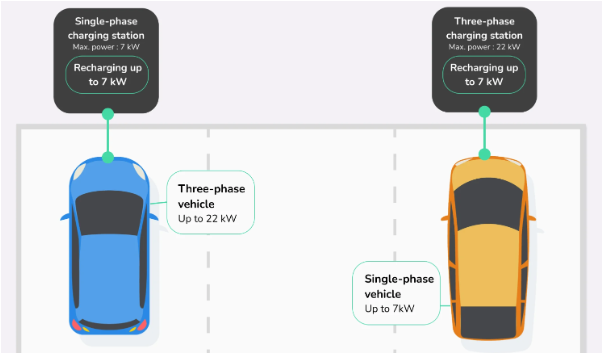
3. Leverage Solar System Output
For customers with solar, highlight how their system’s daily output influences their choice. For instance, a 7kW solar system pairs perfectly with the Ocuar IQ Home Solar Charger, allowing them to harness clean energy to charge their EV, as it is able to utilise the excess solar that would be sold back to the grid. This saves costs and aligns with eco-conscious goals.
* Remember that the self-consumption solar modes of the IQ Home Solar requires a solar export of at least 7 amps per phase to operate. A solar system that has weak export will not be able to support a solar charger.
Their solar inverter and power supply will determine which IQ Home Solar charger is best to select from our recommendations:
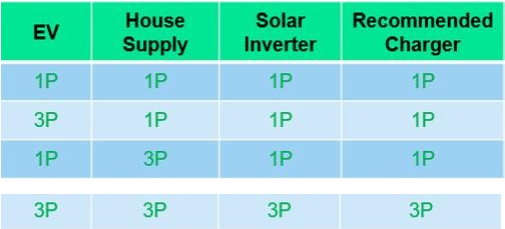
4. Prioritise Load Management
Recommend a charger with Dynamic Load Management (DLM) to protect their home’s electrical system, such as The Ocular IQ Home Solar. It has the ability to dynamically balance power distribution, preventing overloading while optimising charging when utilising the grids power.
*Even if the IQ Home isn’t being used to capture excess solar power, its load management capabilities still provide added safety and energy security to the home.
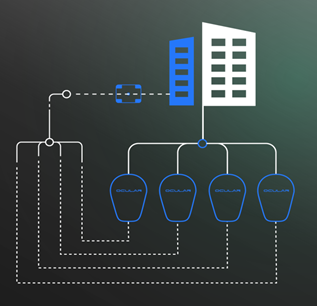
5. Showcase Future-Proof Features
Let your customers know the benefits of future-ready chargers, like the IQ Home Solar range, which is solar-compatible and has advanced integrations like time-of-use charging and smart scheduling and even net metering with the updated IQ Home Solar Range soon to come.
The IQ Home Solar comes with a free smart phone app which allows the users to schedule their charging session, monitor the performance in real time, and export their charging history. On top of that, the IQ Home Solar is OCPP1.6J compatible, meaning the customer have the flexibility to control the charger with numerous different apps on the market.
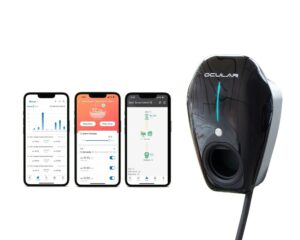
6. Simplify the Decision and Provide Peace of Mind
By providing your customers with well-informed recommendations, you position yourself as a trusted partner in their EV journey. This also allows you to showcase the value of Ocular Charging’s range of advanced solutions, including our solar-compatible chargers.
1300 912 650
The Rising Demand for Public EV Charging
Electric Vehicle (EVs) have become increasingly popular in the last half decade with EV sales growing from less than 1% of all new car sales in 2019 to 1 in every 10 new cars sold, today. This has put pressure on the Australian Government to increase the public charging infrastructure for EV drivers. In response to this pressure the Australian Government have increased public EV charging locations throughout Australia by 75% from 464 locations by the end of 2022 to 812 by the end of 2023.
Government Policies and Incentives
A goal was set by the Australian Government to reach zero emissions by 2050. To help achieve this they have aimed to increase EV sales to 52% by 2030/31. This has been promoted through government initiatives such as subsidies for the purchase of EVs by Australians. To help alleviate the growing pressure on public EV charging stations the government have created several charging infrastructure initiatives in the previous years to increase the number of public chargers across Australia.
In April of 2023, the Australian Federal Government announced its plan to fund the installation of 117 EV chargers on key national highway routes across Australia. $39.3 million was allocated to fund the installation of accessible public EV chargers no more than 150km apart which connected to all capital cities.
Initiatives like the Round 3 NSW Fast Charging Grant have focused on installing charging infrastructure along highways and major roads. Similarly, the NSW Kerbside Charging Program aimed to enhance accessibility for EV drivers who lack off-street parking by increasing the number of kerbside chargers.
To further promote the transition to electric vehicles and to meet their goal, the Australian Government has invested in numerous programs designed to expand charging infrastructure across cities and highways. These efforts not only promote EV adoption but also contribute to a more sustainable future.
Urban EV Charging Networks
Local councils are moving towards a more sustainable future with the adoption of EV fleets while also increasing public EV charging stations within their communities. Canterbury Council was the first of many to switch from internal combustion engine (ICE) powered vehicles to fleet EVs back in 2018. This decision was not made lightly and there was careful consideration about which company would best suit their charging needs. After careful consideration, Canterbury Council decided that EVSE was the best fit for them. Since 2018, the council has installed chargers in five separate locations with plans for a sixth.
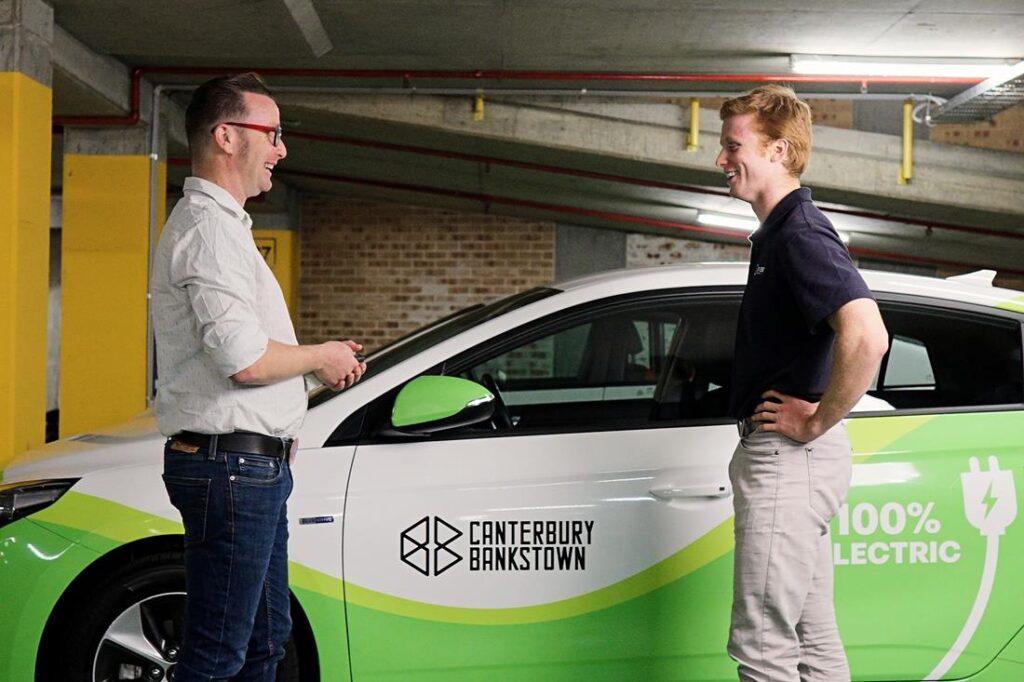
Other councils have utilised government initiatives such as the Kerbside Charging Grant which allows councils and local destinations access to considerable funding for AC charging hardware, software & installation services. This benefits not only the council but residents and visitors who wish to charge their vehicle publicly.
Smart Charging Solutions
Public EV charging stations are becoming more commonly used in comparison to a few years ago with charging infrastructure locations increasing rapidly. App-based charging platforms such as Exploren are making public charging easier and more convenient. It is now possible to locate chargers, get directions and pay for charging all through the one app. With Exploren you will find chargers across Australia and compare pricing before arriving, therefore making it easier to find your cheapest and nearest charger. Payment is simple by uploading money to your balance on the app.
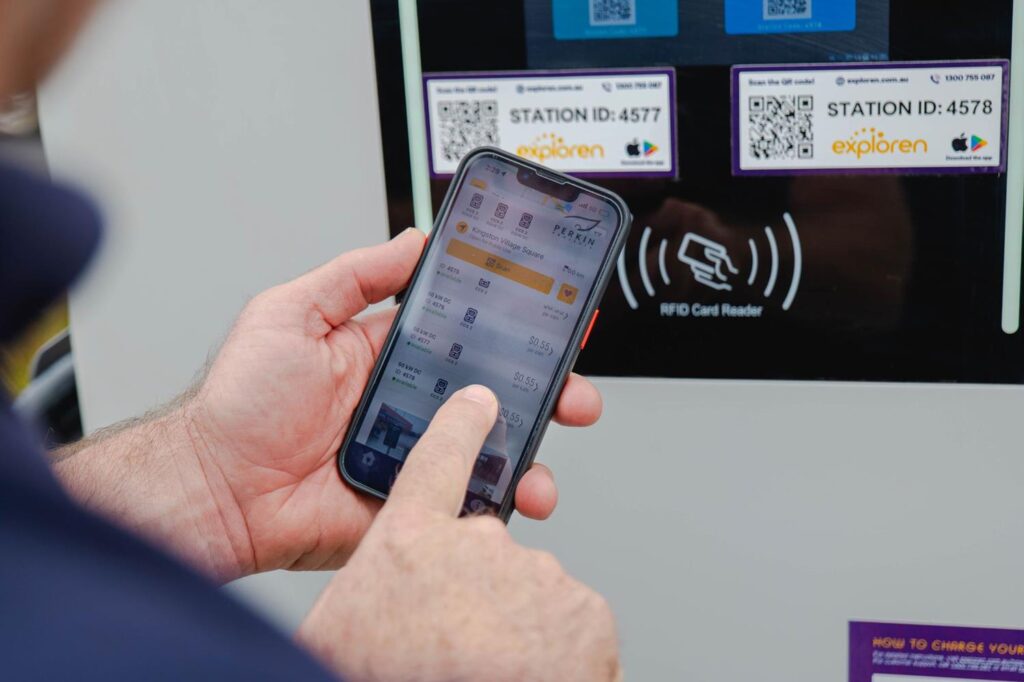
Highway Charging Networks
AC charging stations are most commonly installed and are suitable for installation around shopping centres, multi-unit dwellings and public carparks. Whereas DC charging stations are best installed along highway routes and at service stations. This is because DC charging stations are a lot faster than AC and require the car to be charging for less than half the time, perfect for a quick road trip top up.
DC charging stations begin at 20KW Portable options or a flexible wall mounted and floor mounted 30kW and range up to 420kW. The Ocular DC Titan which comes in a 30/60kW dual, or single port can charge most EVs in under an hour and is built with modular parts to ensure optimal maintenance. In recent years major advancements have been made in the charging technology industry. With the recent addition of a 420kW DC ultra-fast charger. The Ocular Orion comes in 240-420kW configurations and can charge a vehicle in minutes.
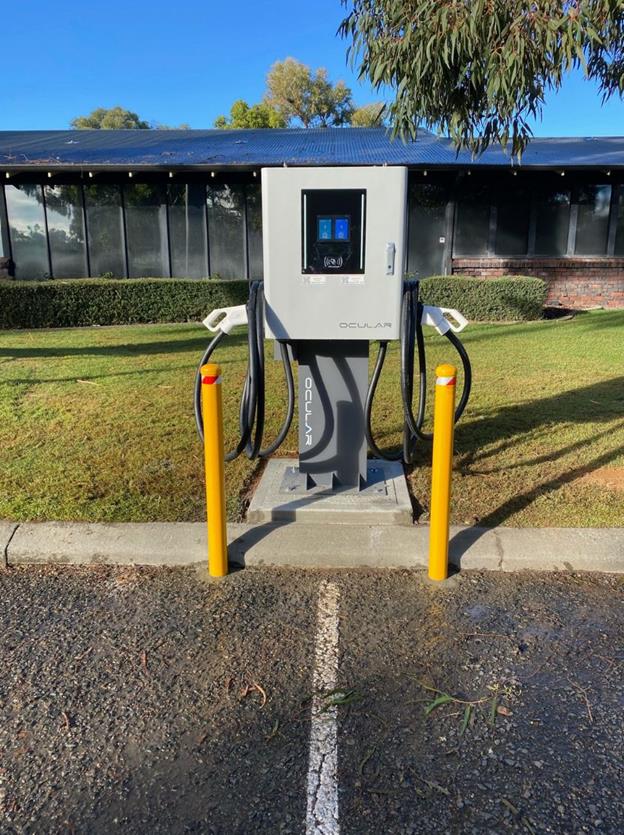
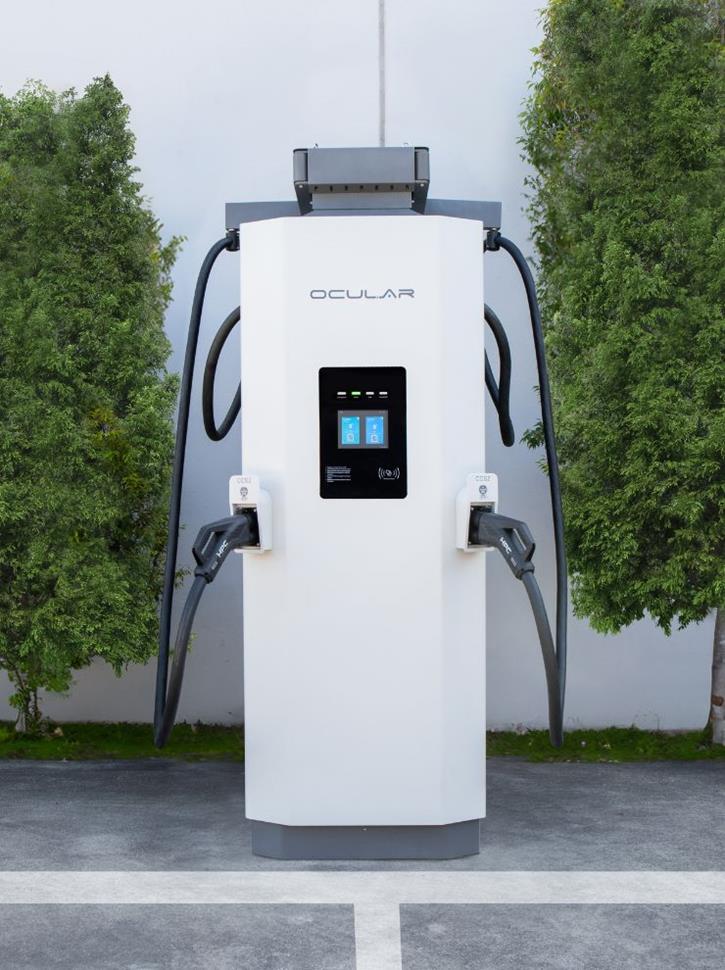
DC fast charging stations are an ideal solution for EV drivers with range anxiety, especially those looking to travel long distances. These stations ensure that drivers can charge their vehicles in major towns, cities and along highways, alleviating concerns about running out of power between destinations.
As the demand for charging infrastructure continues to rise across cities and along highways, the Australian Government has stepped up by not only providing incentives for new EV drivers but by providing businesses with subsidies for EV charging hardware and installation. With a growth of over 75% within one year, we’re excited to see the future and witness the growth of EV charging infrastructure.
1300 912 650
Start 2025 off on the right foot and increase customer loyalty, improve employee satisfaction and enhance your businesses sustainability profile. If you’re looking to improve your business for 2025, now’s the time to start. Continue reading to discover how installing a fast EV charger can boost your business in many ways.
Boost Customer Loyalty and Attract New Clients
EV drivers are constantly looking for convenient locations to charge their vehicle quickly, around where they live, work, or at their favourite coffee shop. Most often accessible public EV charging stations are AC (alternate current) chargers, which can take up to 6-8 hours for a full charge. In this case fast chargers refer to commercial or DC (Direct Current) chargers which are 30kW and above. These chargers typically charge a vehicle from 10% – 80% in less than 2 hours. With higher powered chargers, completing a full recharge in less than 30 minutes. By providing fast charging, businesses may see an increase in customer returns.
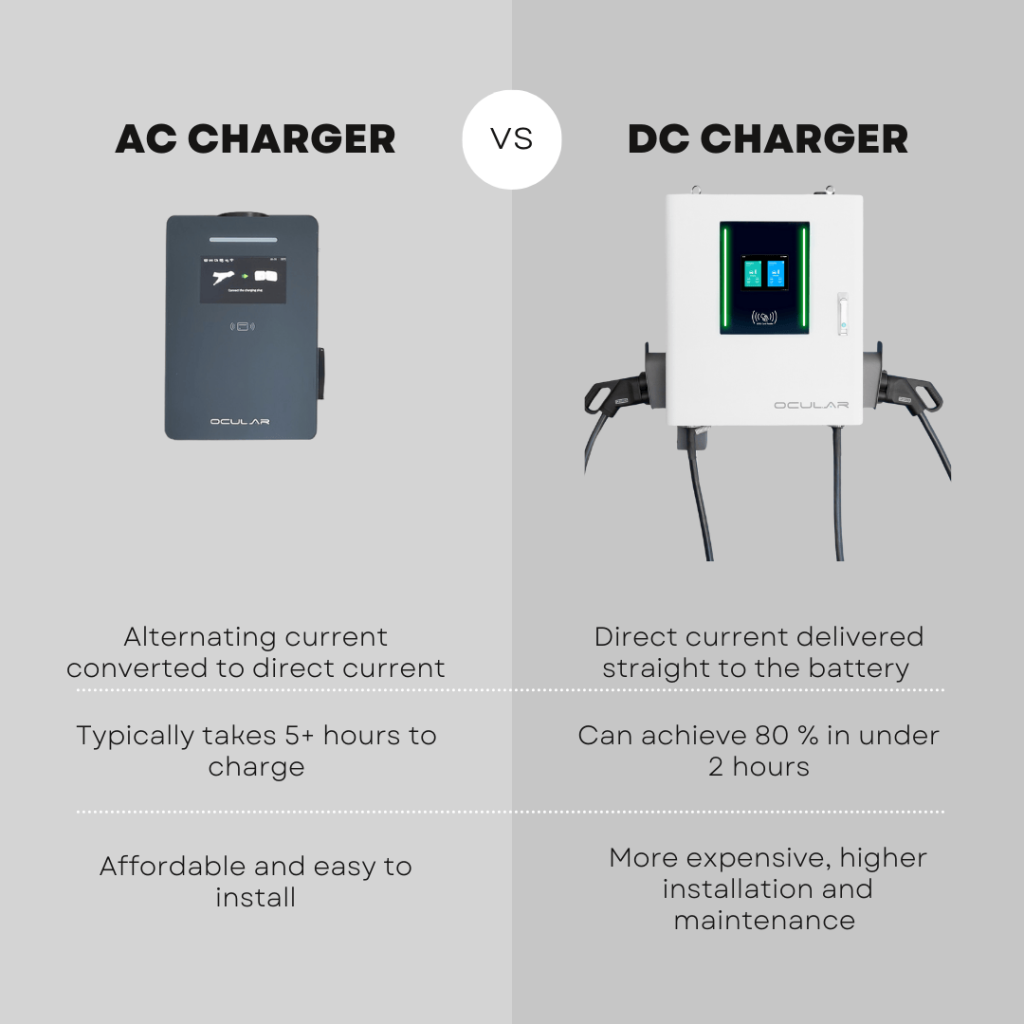
This extra downtime while a vehicle charges may increase the chances of the driver looking around at nearby businesses, potentially doing some extra shopping. Businesses who provide EV chargers are likely to see an increase in customers while they charge, increasing the revenue for your business and others nearby.
Enhance Your Sustainability Profile
Nowadays customers are more conscious of the businesses they buy from and the practices they engage in. Eco-conscious customers tend to look for eco-conscious businesses. Installing fast chargers within your business can encourage the switch to electric vehicles and promote the business as a sustainable company, thus enhancing it’s brand image. Sooner or later EV charging will be everywhere but at this point it can be hard to find, get ahead of the curve and boost your sustainability profile before the rest.
Improve Employee Satisfaction and Retention
For businesses with employees who drive EVs it may be worthwhile installing an EV fast charger within your business. Allowing employees to recharge their vehicle while at work will improve their satisfaction levels and encourage them to charge at their workplace for free. If businesses are struggling to get their employees to stop working from home, this may be an enticing offer which can get them back into the office.
Increased Revenue Opportunities
Installing an EV charger at your business allows you to decide whether you wish to charge customers for their charging or provide it for free.
Charging customers a fee when they recharge creates additional revenue for the business. On the other hand, providing free charging or only allowing them to charge in transactional circumstances (e.g. a cafe may provide free charging to individuals who have spent $20) will entice customers to return and increase their customer loyalty.
Future-proof your business for technological advancements
Before installing an EV fast charger it is important to ensure it is suitable for upcoming technological advancements. Selecting chargers that are equipped with advanced hardware such as three-phased power capability and intelligent load management software ensures scalability and helps to reduce operational costs over time. Additionally, adding a nayax credit card payment system to your charger allows you to choose between providing free charging or charging a fee. This flexibility allows you to adjust your model as customer demand or market trends change.

Investing in an EV fast charger in 2025 is beneficial in many ways, from increased revenue to added convenience for employees, investing in EV infrastructure positions your business as a leader in the sustainability sector. EV adoption is only accelerating and the demand for charging is only growing. Get ahead of the competition and install a fast charger for your 2025 new year.
1300 912 650
Discover the financial implications and advantages of installing residential and commercial EV chargers in Australia, and how they can drive the transition to a greener future.
Differences Between Residential Chargers and Commercial EV Chargers
Residential EV Chargers are typically designed for personal use in homes and are meant to charge a single vehicle overnight or during off-peak periods. These chargers are usually slower rates (7-22kW) compared to commercial chargers, which are designed to handle one or two vehicles at a time and offer significantly faster charging speeds.
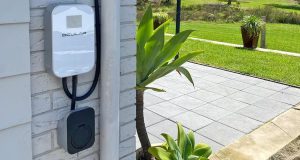
Commercial EV chargers, on the other hand, are often installed in public spaces such as shopping centres, parking lots, and workplaces. These chargers can be AC or DC chargers and are built to be more durable and can accommodate higher power outputs (30-420kW), enabling faster charging for a larger number of electric vehicles.
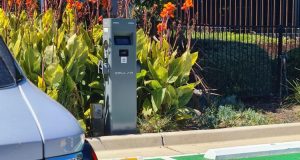
Costs of Residential EV Chargers
The cost of installing a residential EV charger in Australia can vary significantly depending on the type of charger and the complexity of the installation. Portable chargers, known as “trickle chargers” or “granny chargers”, can cost far less than wall-mounted electric vehicle chargers. They provide around 10km of range per hour, taking most vehicles 18-48 hours to fully charge, which is a much less efficient way of charging. These chargers do not require installation, and can be plugged into a household outlet.
However, Level 2 chargers, which require installation, may be a bigger upfront cost, but the convenience is worth it. A 7kW charger can provide around 40km of range per hour, while a 22kW charger can provide up to 120km per hour. Although they are more costly, they save you significant time in the long run, enabling you to top up your charge between dropping the kids to school and picking up the groceries.
Installation fees can vary depending on the electrical work required. Factors such as the distance from the electrical panel to the installation site, whether single-phase or three-phase power is needed, and any necessary upgrades to the home’s electrical system can also affect the total cost.
Advantages of Residential EV Charger Installations
Having a residential EV charger installed at home provides a number of benefits that enhance the electric vehicle ownership experience. Here are some of the key benefits:
Convenience of Home Charging:
One of the most significant benefits of a residential EV charger is the convenience it offers. Instead of making regular trips to public charging stations, you can simply plug in your vehicles at home. This means that charging can be done overnight or during off-peak hours, ensuring the vehicle is fully charged and ready to go whenever you need it. The elimination of time spent searching for a public charger allows for a smooth transition to electric driving.
Cost-effectiveness:
Charging your EV at home can be more economical than relying on public charging stations. Homeowners can take advantage of off-peak electricity rates, which are generally lower than rates during peak demand times. By strategically charging during these hours , you can significantly reduce your overall energy costs. Additionally, many utility companies offer special rates or incentives for EV owners, further enhancing the financial benefits of home charging.
Increased Property Value:
The installation of a residential EV charger can enhance the value of a home. As electric vehicles become more popular, potential homebuyers may view the availability of charging infrastructure as a desirable feature. This added convenience can set your property apart in a competitive real estate market, making it a valuable investment for current homeowners.
Time Management:
For residential EV charging, the value of saving time is immense, both in terms of daily convenience and long-term benefits. With a home charger, you can avoid frequent trips to public charging stations and simply plug in overnight, starting each day with a fully charged vehicle. This not only saves you time but also provides you with flexibility, allowing you to set your own charging schedule to match your lifestyle and utility rates for cost savings.
Costs of Commercial EV Chargers
The costs associated with installing commercial EV chargers are generally higher than those for residential chargers. This is dependent on the type and capacity of the charger. Installation costs can also be substantially more than residential installations.
Factors that influence the cost include the number of charging ports, the need for electrical upgrades, and the infrastructure required to support high power outputs. Additionally, ongoing maintenance and operation costs should be considered when evaluating the total investment.
Advantages of Commercial EV Chargers for Public Businesses
Installing EV chargers at public businesses offer a range of benefits that go beyond just meeting the needs of electric vehicle owners. As the EV market continues to expand, these charging stations can become a key differentiator for businesses looking to stay ahead.
Attract a new Demographic & Growing Consumer Base:
As more people make the switch to electric vehicles, offering charging facilities can draw in a larger, eco-conscious customer segment. Businesses with EV chargers signal a forward-thinking, environmentally friendly mindset, which can enhance their brand reputation and loyalty among customers who value sustainability.
Enhance Customer Satisfaction and Extend Visits:
Providing charging facilities improves the customer experience by offering convenience and encouraging longer stays. This can lead to increased spending, as customers are more likely to engage with your business while their vehicle charges.
Generate Additional Revenue Streams:
Paid charging services create a new income source for businesses, helping to offset installation costs and contribute to operational expenses. This makes EV chargers not just an amenity, but a smart investment with long-term financial benefits.

Advantages of Commercial EV Chargers for Fleets
For businesses that operates vehicle fleets, transitioning to electric vehicles (EVs) and installing dedicated commercial EV chargers can unlock a range of operational and financial benefits.
Significant Fuel Cost Savings:
Electric vehicles are more cost-effective to “fuel” compared to traditional internal combustion engine (ICE) vehicles. By charging fleet vehicles with electricity instead of relying on gasoline or diesel, businesses can substantially reduce fuel costs. These savings become more pronounced as fleet sizes grow, translating to significant long-term reductions in operational expenses.
Lower Maintenance Expenses:
EVs have fewer moving parts and require less maintenance than their ICE counterparts. With no need for oil changes, exhaust system repairs, or complex engine maintenance, businesses can benefit from reduced service costs and fewer vehicle downtimes. Installing commercial EV chargers ensure fleet vehicles remain charged and operational, further minimising disruption and improving reliability.
Greater Operational Efficiency and Reduced Downtime:
Having a dedicated charging infrastructure for your fleet ensures vehicles are always ready for use, optimising fleet management and reducing downtime. Drivers can easily charge vehicles during off-peak hours or overnight, ensuring that fleets are fully charged and available for use during working hours. This increases reliability, improves fleet scheduling, and enhances overall operational efficiency.
Government Incentives and Rebates for EV Charger Installation
The Australia Government offers various incentives and rebates to encourage the adoption of electric vehicles and the installation of chargers. These incentives can help offset the initial costs and make the transition to electric vehicles more affordable for both individuals and businesses.
Programs such as the NSW Electric Vehicle Destination Charging Grants, WA Charge Up Grant & more offer eligible site owners the opportunity to have a charger installed at no cost, with Charge Point Operators serving as the hardware providers, installers, and ongoing owners of the chargers.
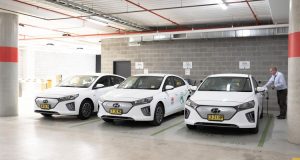
The Economic Impact of Commercial EV Charging Stations
As the demand for EVs continue to surge, the installation and expansion of charging infrastructure present a range of positive economic impacts for local communities, industries, and businesses.
Stimulating Economic Activity in Commercial Areas:
The presence of EV charging stations can act as a magnet for EV owners, drawing them into commercial areas where they are likely to spend time while their vehicles charge. Businesses near charging points, such as retail stores, restaurants, cafes, and entertainment venues, can benefit from the increased foot traffic, leading to greater customer engagement and higher sales. This, in turn, stimulates the local economy by boosting revenue for nearby businesses.
Creation of New Jobs for Electricians:
The installation of commercial EV charging stations require skilled electricians, and provide them with numerous benefits. Such as the increased demand for their expertise and the ability to specialise in EV infrastructure. This growing industry not only provides workers with a great volume of projects but provides them with higher paying opportunities due to the scale of the installations, alongside continual maintenance and upgrade work.
Contribution to a Sustainable Economy:
The expansion of EV charging stations contribute to the broader goal of reducing greenhouse gas emissions, paving the way for a greener, more sustainable economy. This shift not only helps to mitigate the effects of climate change but also opens the door for new “green” industries and innovations, such as renewable energy integration with charging networks. By fostering sustainable practices, the economy benefits from long-term growth potential in environmentally friendly technologies.
In summary, the installation of residential and commercial EV chargers in Australia presents a wealth of financial, operational, and environmental benefits that are increasingly vital in today’s shifting landscape. Residential chargers offer convenience and cost savings for homeowners, ensuring that you can charge your vehicles efficiently at home. Meanwhile, commercial chargers not only enhance customer satisfaction and loyalty but also drive economic activity in local areas, creating jobs and fostering a sustainable economy.
As the demand for electric vehicles continues to rise, embracing EV charging infrastructure is not just a forward-thinking decision; it’s a necessary step toward a greener future. Government incentives further bolster this transition, making the installation of chargers more accessible for both households and businesses. By investing in EV charging solutions, you are not only adapting to the changing automotive landscape but also paving the way for a cleaner, more sustainable environment for further generations to come.
At Ocular Charging, we’re dedicated to improving the way you power your electric vehicle (EV).
As we move toward cleaner energy solutions, we believe your EV chargers should easily integrate into your home. By using excess solar power, you can save money while also benefiting from a smart load balancing system that protects your home’s electrical supply.
Our mission is to give you complete control over your charging experience, ensuring that clean energy is efficiently directed to your vehicle. Here’s how Ocular Charging is making solar EV charging smarter and more sustainable:
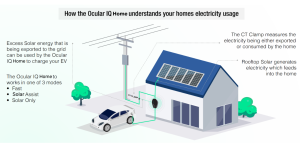
With more homeowners adopting solar energy, many are also using this power to charge their EVs. Our chargers are designed to be compatible with your home’s solar setup. The chargers are equipped with CT (current transformer) clamps, which monitor the amount of energy available in your home’s power system. This real-time feedback helps prevent electrical overload.
On cloudy days or when your solar panels aren’t producing enough energy, our smart chargers enable you to switch to an efficient and cost-effective mode, drawing only what’s needed from your home’s grid.
Smart Control & Freedom at Your Fingertips
Our app gives you full control over your charging experience, allowing you to:
With detailed insights into your energy consumption, our app allows you to manage your charging with ease.
Three Charging Modes for Every Need
Our solar chargers offer three distinct modes, tailored to match your energy needs and solar availability:
Solar Only Mode: This mode allows the charger to use only excess solar energy. This is ideal when your solar system is generating a lot of extra power. The example below shows a home with –21.9Amps of excess solar energy which is where this mode would work best because there is a clear and consistent surplus of solar power. On cloudy days or when your solar system isn’t generating enough extra power (when surplus hovers between 0 and –8 amps) it is recommended to use other modes of charging listed below.
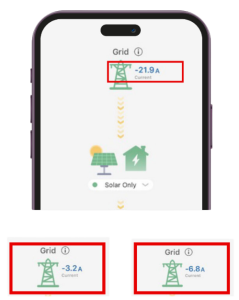
Solar Assist: This mode balances solar energy and grid power by charging at a baseline of 6 amps, drawing from the grid while utilising any available excess solar energy. It avoids the issue of the charger starting and stopping during a session due to fluctuations in solar energy generation, which can happen in Solar Only mode when there is not enough energy surplus. In the example below, a three-phase charger has two phases exporting 10 Amps of solar energy, while one phase is only exporting 1 Amp. Despite this imbalance, Solar Assist still allows charging by pulling in the right amount of power—charging at 6 Amps per phase. The difference between Solar assist and solar only is that solar assist will always charge at a minimum of 6 amps, no matter how much excess solar is being produced across the phases. This allows it to be more flexible and allows charging even when one or more phases produce less than the threshold of 8 amps.
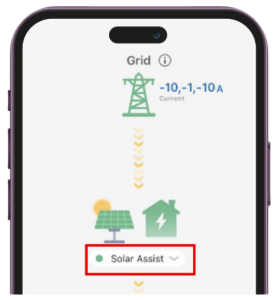
Fast Mode: This mode is recommended when the vehicle needs to be charged at the fastest rate possible. Fast mode pulls power from any available source, whether it’s from solar energy or grid power to deliver the fastest charge. This mode is ideal when you’re in the need to charge quickly, or when there is no excess solar power available, such as during the evening or on cloudy days.
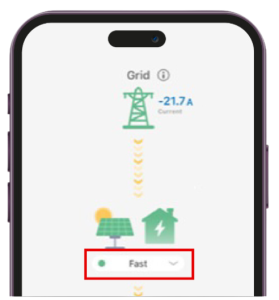
One of the standout features of Ocular Charging is its ability to adjust energy usage to your household’s energy demand. As daily activities in your home begin—like using appliances, lighting, or HVAC (Heating ventilation and air conditioning) systems—our charger automatically lowers its energy consumption to prevent overloading. As your household energy demand drops, the charger ramps up its speed to ensure your EV is fully charged.
This intelligent energy management guarantees that your home’s electricity supply is always balanced and kept safe, preventing unnecessary strain on the system while optimising your charging experience.
Driving Innovation, Powering Sustainability
At Ocular Charging, we’re not just about providing EV chargers—we’re about driving innovation and powering sustainability. Our solar-integrated charging systems are designed to make green energy accessible and efficient for everyone. By helping you make the most of your solar power, we’re paving the way toward a greener, smarter future.
Join us on this journey toward cleaner energy and a more sustainable tomorrow!
1300 912 650
Electric vehicles (EVs) are becoming an integral part of Australia’s shift towards sustainable transportation. As the country progresses toward net-zero emissions, the need for efficient EV charging infrastructure has never been more critical. Let’s explore the current landscape and what the next decade holds for EV charging in Australia.
In 2023, Australia introduced its National Electric Vehicle Strategy, a comprehensive framework designed to accelerate the adoption of EVs while supporting the development of essential infrastructure. One of the key elements of this strategy is the introduction of a fuel efficiency standard. This standard sets mandatory limits on the amount of carbon dioxide (CO2) emissions that vehicles can emit, encouraging car manufacturers to produce more fuel-efficient vehicles and promote the adoption of EVs.
By implementing these standards, Australia aims to reduce the dominance of high-emission internal combustion engine (ICE) vehicles and provide consumers with cleaner, more efficient options. The fuel efficiency standard not only pushes automakers to innovate but also makes EVs a more appealing choice for Australians by leveling the playing field in terms of costs and environmental benefits.
Beyond the fuel efficiency standard, the National Electric Vehicle Strategy supports various initiatives, including battery recycling, infrastructure planning, and the rollout of EV-ready designs in apartment buildings. Additionally, the government is training emergency service workers to handle EV-related incidents safely, ensuring a smooth transition to an electric future.
On the infrastructure side, Australia is expanding its EV charging network through programs like the EV Fast Charging Grant, which are driving the installation of fast chargers across New South Wales. These grants aim to reduce range anxiety by ensuring that EV drivers have easy access to charging points, encouraging more people to switch to electric vehicles.
Looking forward, Australia has set ambitious targets to drive the future of EVs. By 2030, the country aims to have EVs make up 52% of new car sales, a significant increase from today’s figures. This is part of a larger vision to achieve net-zero emissions by 2050, and the widespread adoption of EVs will be crucial to this goal.
To accommodate this rapid growth, the Australian Electric Vehicle Industry is working toward the ambitious goal of having one million EVs on Australian roads by 2027. This will require not only an increase in EV availability but also a significant expansion of the charging infrastructure. We can expect to see a surge in the number of fast-charging stations nationwide, with a focus on urban areas, highways, and even remote regions to ensure that all Australians have access to reliable EV charging.
Technological advancements will also play a key role in shaping the future of EV charging infrastructure. Emerging technologies like wireless charging, ultra-fast charging, and smart grid integration are set to transform the EV charging experience, making it more efficient, convenient, and user-friendly.
These innovations will make the EV charging experience faster, more convenient, and more environmentally friendly, encouraging wider adoption. As Australia continues to invest in charging infrastructure, the integration of these technologies will be crucial in meeting the growing needs of EV drivers while supporting the nation’s transition to a cleaner energy future.
In conclusion, Australia is well on its way to creating a robust EV charging infrastructure, with a clear roadmap outlined in the National Electric Vehicle Strategy. The introduction of fuel efficiency standards and the continued development of charging infrastructure are critical steps in achieving the country’s long-term sustainability goals. With ambitious targets set for the next decade, Australia is poised to embrace a cleaner, more sustainable future powered by electric vehicles.
If you have any further questions, feel free to contact us:
1300 912 650
Explore the lifecycle and sustainable disposal of EV chargers as they reach their end of life.
EV chargers have a lifecycle that consists of several stages. The first stage is manufacturing, where the chargers are produced using various components and materials. Once manufactured, the chargers are installed at charging stations or in homes and businesses to charge electric vehicles.
Unfortunately, over time, EV chargers may start to show signs of wear and tear, requiring maintenance and repairs. This is the second stage of their lifecycle, where they should be regularly serviced to ensure optimal performance and safety. To prolong this stage, we recommend regular maintenance and upkeep of your charger to ensure it can last as long as possible. However, there comes a point when elements of the charger reach the end of their useful life and can no longer be repaired or maintained. At Ocular we prioritise durability and sustainability. Our products are designed with modular components to extend and prolong a charger’s life, therefore meaning that individual parts can be replaced instead of the whole charger. This ensures you do not need to replace the whole charger, and it can be simply fixed by replacing one part. We keep sustainability practices in mind from start to finish when designing our chargers and have strived to make them 100% recyclable, achieving a remarkable recyclability rate of 93%.
Understanding the lifecycle of EV chargers is important in order to develop sustainable practices for their disposal and to minimise their environmental impact.
Discarding EV chargers without proper consideration for the environment can have significant impacts. These chargers often contain hazardous materials and components that can be harmful if not handled correctly.
To mitigate these environmental impacts, it is crucial to implement proper recycling and disposal practices for EV chargers, promoting a circular economy where materials are reused and recycled to minimise waste and resource consumption.
When it comes to recycling and disposing of old EV chargers, there are several best practices to follow to ensure their proper handling and minimise their environmental impact.
Firstly, it is important to identify local recycling programs or facilities that accept EV chargers. These programs are equipped to handle the proper disassembly and recycling of the chargers, ensuring that hazardous materials are managed appropriately.
At our sister company, EVSE, we have established comprehensive recycling programs for used and end-of-life charging stations and components. These programs ensure that valuable materials are recovered and reused, reducing the need for new raw materials.
As the demand for electric vehicles continues to grow, so does the need for sustainable EV chargers and charging infrastructure. This has led to the development of various innovations and future trends in EV charger sustainability.
One of the key innovations is the integration of renewable energy sources into charging infrastructure. This includes the use of solar panels and wind turbines to generate clean energy for charging electric vehicles. By utilising renewable energy, EV chargers can reduce their carbon footprint and reliance on fossil fuels.
Another trend is the implementation of smart charging technology. Smart chargers have the ability to communicate with the electric grid and adjust their charging patterns based on factors such as electricity demand, grid capacity, and renewable energy availability. This helps to optimise charging efficiency and reduce strain on the grid.
Furthermore, there is a growing focus on the development of biodegradable and recyclable materials for EV chargers. By utilising sustainable materials, such as bioplastics and recyclable metals, the environmental impact of charger production and disposal can be minimised.
These innovations and future trends in EV charger sustainability are essential in creating more sustainable and efficient charging infrastructure for electric vehicles.
If you have any further questions, feel free to contact us:
1300 912 650